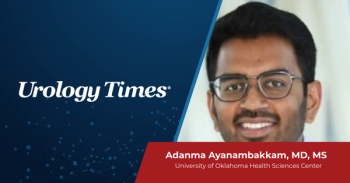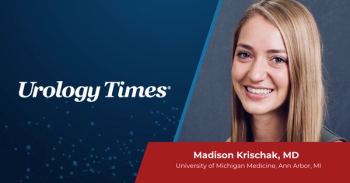
John Michael DiBianco, MD, discusses the design of the ongoing SOUL trial, which is assessing stent omission vs stent placement following uncomplicated ureteroscopy.

John Michael DiBianco, MD, discusses the design of the ongoing SOUL trial, which is assessing stent omission vs stent placement following uncomplicated ureteroscopy.

Ilaha Isali, MD, MSc, identifies major unresolved gaps in sex-specific bladder cancer research.

Daniel Spratt, MD, discusses how the ArteraAI Prostate Test (Post-RP) could help guide treatment intensification decisions.


Dean Elterman, MD, MSc, FRCSC, attributes the 99% catheter-free discharge rate in the BREEZE study largely to appropriate patient selection.

Steven A. Kaplan, MD, frames the greatest value of ProVee not as competition with other procedures, but as a compelling alternative to chronic medical therapy.

Steven A. Kaplan, MD, emphasizes that ProVee is well suited for office-based or ambulatory settings and is designed to be performed under local anesthesia

Exogenous testosterone therapy and fertility are fundamentally incompatible.

Although the trial includes multiple tumor types, the presented data focus on RCC, predominantly clear cell disease.

Kevin C. Zorn, MD, FRCSC, FACS, outlines notable advances in the management of benign prostatic hyperplasia over the past year.

Regarding compounded testosterone products, Jesse N. Mills, MD, takes a balanced but cautious stance.

The review highlights the role of sex chromosome biology, particularly genes on the X chromosome that escape inactivation.

Dean Elterman, MD, MSc, FRCSC, emphasizes that a key differentiator of this new class of devices lies in material science and mechanism of action.

Hormonal changes influence fluid balance and bloating, increasing pressure within the pelvis.

Maxwell L. Sandberg, MD, highlights recent study findings on the role for perioperative systemic therapy for renal cell carcinoma with a tumor thrombus.

Mechanistically, Kaplan emphasizes that ProVee’s key differentiator is not simply that it is an expanding urethral device, but that it belongs to a new class of flexible, catheter-like technologies.

Raveen Syan, MD, FPMRS, shares her excitement about the Rising Star Program, now entering its second year.

Madison Krischak, MD, outlines key findings from a study looking at the use of nephrometry scores to guide routine renal mass biopsies.

Beyond the new features, attendees can expect a focused, high-yield scientific program covering both benign and oncologic disease.

The SOUL trial is exploring the feasibility of stent omission following uncomplicated ureteroscopy.

Overall, germline pathogenic variants were common, identified in approximately 1 in 7 tested patients.

Sameena A. Rahman, MD, said she sees this development as a hopeful signal amid a challenging landscape for women’s health care.

Bradley McGregor, MD, contextualizes recent data on emerging treatment regimens in high-risk, BCG-naïve NMIBC.

Daneshmand also emphasized the evolving, highly collaborative role between urologists and medical oncologists as perioperative systemic regimens expand.

Mills warns that poorly justified combination regimens complicate downstream management for urologists.

Laura Bukavina, MD, MPH, MSc, recapped a debate at SUO 2025 on how to appropriately classify high-grade bladder tumors.

Mohit Khera, MD, MBA, MPH, recaps key takeaways from an FDA expert panel discussion on testosterone replacement therapy for men.

Aleece Fosnight, MSPAS, PA-C, argues that incontinence must be understood as a common, treatable medical condition rather than a personal failure or an inevitable part of aging.

Fed Ghali, MD, discusses the potential opportunity to de-escalate therapy in patients receiving perioperative EV/pembro.

Gal Wald, MD, highlights patient-reported outcomes from a phase 2 trial of intravesical gemcitabine plus BCG for patients with BCG-exposed high-grade NMIBC.